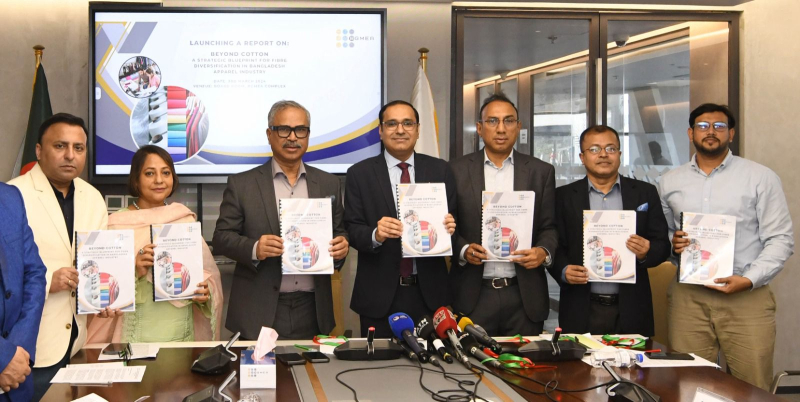- ‘With Science, We Can Feed the World of 9.7 Billion by 2050′ |
- WHO warns of severe disruptions to health services for funding cuts |
- ICJ hears Sudan’s case accusing UAE of ‘complicity in genocide’ |
- Bombardment, deprivation and displacement continue in Gaza |
- Aged and Alone: The hidden pains in old age homes |
Cotton products still prefered against non-cotton options

BGMEA made public the results of its study o beyond cotton on Sunday.
Dhaka, Mar 3 - The Bangladesh Garment Manufacturers and Exporters Association (BGMEA) has released a pioneering study report titled "Beyond Cotton: A Strategic Blueprint for Fibre Diversification in Bangladesh Apparel Industry".
The findings of this study were officially unveiled at the BGMEA headquarters in Dhaka on March 3.
The study was conducted by Wazir Advisors, an international consulting firm focused on sectors of textile, apparel, and retail. The comprehensive report signifies a paradigm shift in the industry's approach, recognizing the untapped potential and opportunities within the non-cotton textile and apparel value chain.
The report provides actionable recommendations, meticulously outlining a roadmap for the industry to navigate the complexities of diversification, presenting concrete steps for stakeholders to enhance their competitiveness on the global stage.
Faruque Hassan, President, BGMEA commented on the report stating “The findings and recommendation of this study are very important for our industry. It provides a roadmap for us to not only adapt to the evolving global market but to thrive in it. BGMEA is committed to fostering diversification and supporting exponential growth in the Bangladesh apparel industry. This report opens up new horizons for Bangladesh, and we are excited to embrace the opportunities it presents.”
Given the changing dynamics of the global fashion landscape, there is a notable shift towards fibres other than cotton. These fibres are not only synthetics (such as polyester & nylon); but also regenerated fibres (such as Viscose rayon), animal fibres (wool & silk) and even other vegetable fibres (such as linen).
While the demand for cotton products is still large, from a diversification perspective, non-cotton fibre products offer an important opportunity, said BGMEA.
By aligning with these evolving trends, Bangladesh can not only meet the changing demands of consumers but also position itself as a key player in the contemporary fashion industry.
The project lead from Wazir Advisors, Varun Vaid observed, “Addition of non-cotton products in Bangladesh’s export basket can enhance the total addressable market for the country. Bangladesh has already proved its mettle in the global apparel trade by emerging as the second largest exporting nation. With development of complete supply chain of non-cotton products, Bangladesh can aim to maintain its high growth trajectory”.
This study covers facts and figures about the changing fibre mix in the global context, emerging trends that will impact industry in future, an in-depth analysis of Bangladesh’s current value chain structure based on feedback of buyers, manufacturers & policy makers, comparison of Bangladesh with other leading non-cotton players such as China, Indian & Taiwan.
It sets the vision for Bangladesh’s non-cotton sector and the roadmap to achieve it.
The study will serve as a guiding compass, steering the Bangladesh apparel industry towards a future that embraces innovation, versatility, and sustained competitiveness in the ever-evolving global market. - UNB

